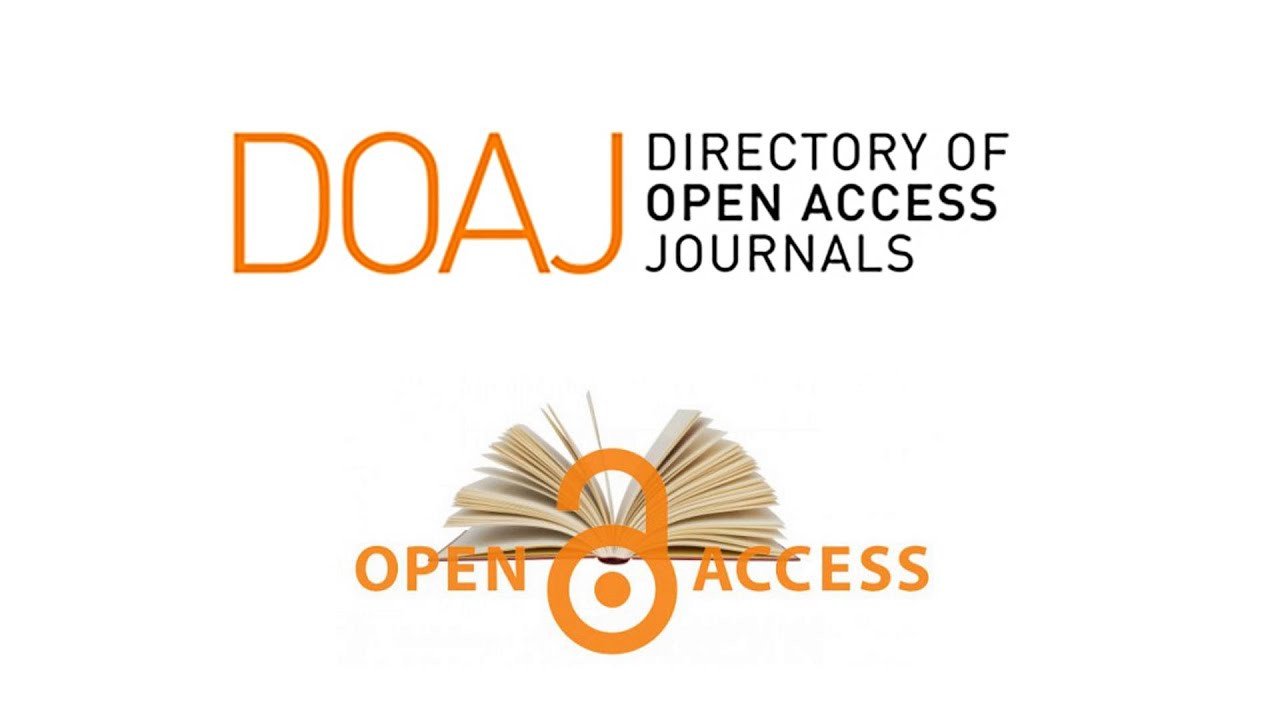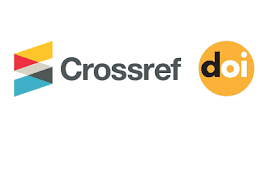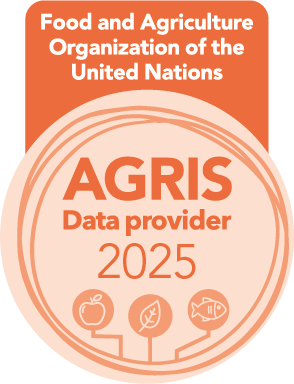Salinity and Organic Feed Optimization for Artemia franciscana Culture: Differential Survival Responses to Chlorella vulgaris and Saccharomyces cerevisiae in Nauplii and Adults
Keywords:
Artemia franciscana, C. vulgaris, S. cerevisiae, Salinity, SurvivalAbstract
Extensive research on the impact of salinity on artemia populations worldwide, there remains a gap in knowledge about the culture of artemia at different salinity levels with varying feed sources. So, this study aims to cultured Artemia franciscana in controlled conditions at different salinity concentration levels and feeds to check the survival rate and make available live feed sources to reduce cannibalism. This study benefits aquaculture, fulfilling the massive demand to produce brine shrimp at a low cost in the natural ecosystem to upgrade aquaculture production. Our results revealed a significant positive correlation between salinity and SR, with nauplii survival peaking at 90.23 ± 0.83% at 40 ppt. Adults similarly exhibited the highest SR (94.76 ± 65.77%) at 40 ppt. Dietary comparisons showed C. vulgaris outperformed Saccharomyces cerevisiae, with nauplii SR reaching 80.04 ± 4.55% versus 61.19 ± 4.55% (p < 0.005) and adult SR stabilizing at 90.9 ± 3.5% versus 57.6 ± 3.1% (p < 0.05) by day 41. Survival trends were inversely related to salinity for S. cerevisiae, suggesting nutrient limitations or metabolic stress. Conversely, Chlorella vulgaris supported incremental SR improvements, likely due to its rich fatty acid and protein profiles. These findings highlight the synergistic benefits of high salinity (35–40 ppt) and C. vulgaris diets in optimizing A. franciscana culture. In this study, A. franciscana showed a maximum survival rate of nauplii, and an adult was found at 40 ppt with two organic feeds, showing that C. vulgaris is considered a good potential feed with a maximum survival rate as compared to Baker´s yeast (S. cerevisiae).
Metrics
References
Abatzopoulos, T. J.; Baxevanis, A. D.; Triantaphyllidis, G. V. and Sorgeloos, P. (2018). Evolutionary adaptations in Artemia species for survival in hypersaline environments. Hydrobiologia, 466; (1-3), 1 13. https://doi.org/10.1023/A:1014503932417
Adineh, H.; Yousefi, M.; Al Sulivany, B. S. A.; Ahmadifar, E.; Farhangi, M.; Hoseini, S. M. (2024). Effects of Dietary Yeast, Saccharomyces cerevisiae, and Costmary, Tanacetum balsamita, Essential Oil on Growth Performance, Digestive Enzymes, Biochemical Parameters, and Disease Resistance in Nile Tilapia, Oreochromis niloticus, Aquaculture Nutrition, 1388002, 11 pages,. https://doi.org/10.1155/2024/1388002
Ahmed, B. (2023). Nutritional Effects of Dietary Spirulina (Arthrospora platensis) on Morphological Performance, Hematological Profile, Biochemical Parameters of Common Carp (Cyprinus carpio L.). Egyptian Journal of Veterinary Sciences, 54(3), 515–524. doi: 10.21608/ejvs.2023.191557.1441.
Al Sulivany, B.; Owais, M.; Fazal, R.; Asad, F.; Hussein, N. and Selamoglu, Z. (2024). Seasonal effects of protein levels on common carp (Cyprinus carpio) body composition. Iraqi Journal of Aquaculture, 21(2), 111–127. https://doi.org/10.58629/ijaq.v21i2.520
Aminikhoei, Z.; Choi, J. and Lee, S.-M. (2015). Optimal dietary protein and lipid levels for growth of juvenile Israeli carp Cyprinus carpio. Fisheries and Aquatic Sciences, 18(3), 265–271.
Anwer, S. S.; Ali , A. K. and Şule İnci. (2024). The Investigation Of Elements Affecting Certain Microalg’s Development and Possible Antibacterial Properties. Science Journal of University of Zakho, 12(3), 299–307. https://doi.org/10.25271/sjuoz.2024.12.3.1286
Basheer, T.E.; Haji, S.M. and Al Sulivany, B.S.A. (2024). Impacts of 1.5 T MRI Static Magnetic Field on Biochemical and Enzyme Activity Parameters on Radiology Department Workers. Cell Biochem Biophys 82, 3395-3399. https://doi.org/10.1007/s12013-024-01422-6
Brown, M. R.; Jeffrey, S. W.; Volkman, J. K. and Dunstan, C. A. (1997). Nutritional properties of microalgae for mariculture. Aquaculture, 151: 315-331. https://doi.org/10.1016/S0044-8486(96)01501-3
Browne, R. A. and Wanigasekera, G. (2020). Salinity tolerance and osmoregulation in Artemia franciscana. Journal of Experimental Marine Biology and Ecology, 522, 151237. https://doi.org/10.1016/j.jembe.2020.151237
Browne, R. A.; Wanigasekera, G. and Sorgeloos, P. (2019). Combined effects of salinity and temperature on survival and reproduction of five species of Artemia. Journal of Experimental Marine Biology and Ecology, 244(2), 29-44. https://doi.org/10.1016/S0022-0981(99)00111-2
Clegg, J. S., and Trotman, C. N. A. (2019). Physiological adaptations of Artemia to hypersaline environments. Comparative Biochemistry and Physiology Part A: Molecular & Integrative Physiology, 231, 10–18. https://doi.org/10.1016/j.cbpa.2019.02.003
Conceição, L.E.; Aragão, C.; Richard, N.; Engrola, S.; Gavaia, P.; Mira, S. and Dias, J. (2010). Novel methodologies in marine fish larval nutrition. Fish physiology and biochemistry 36, 1-16. https://doi.org/10.1007/s10695-009-9373-z
Coutteau, P.; Lavens,P. and Sorgeloos, P. (1990). Baker's yeast as a potential substitute for live algae in aquaculture diets: Artemia as a case study. Journal of the World Aquaculture Society, 21(1): 1-9. https://doi.org/10.1111/j.1749-7345.1990.tb00947.x
De Micco, E. and Hubbard, R. (2001). Plankton alternatives to Artemia for growth of marine shrimp Litopenaeus vannamei larvae: 180. In: Aquaculture 2001. World Aquaculture Society. Baton Rouge, L A. https://doi.org/10.1016/ world aquaculture.2001.09.020
Dhont, J.; Sorgeloos, P. and Van Stappen, G. (2020). Experimental variability in assessing Artemia survival: Implications for ecotoxicological studies. Aquaculture Research, 51(3), 1123–1132. https://doi.org/10.1111/are.14458
Dhont, J.; Van Stappen, G. and Sorgeloos, P. (2021). Advances in the nutritional physiology of Artemia: Implications for aquaculture. Reviews in Aquaculture, 13(1), 1-20. https://doi.org/10.1111/raq.12445
El-Bermawi, N. A.; Baxevanis Abatzopoulos, D.; Van Stappen, T. J. G. and Sorgeloos, P (2004). Salinity effects on survival, growth, and morphometry of four Egyptian Artemia populations (International Study on Artemia. LXVII). Hydrobiologia 523(1): 175-188. https://doi.org/10.1023/B:HYDR.0000033124.49676.5c
Gajardo, G. and Beardmore, J. A. (2020). The brine shrimp Artemia: Adapted to critical life conditions. Frontiers in Physiology, 3, 185. https://doi.org/10.3389/fphys.2012.00185
Garcia Ulloa, M. and Garcia Olea, J. (2004). Reproductive performance of the Guppy fish Peocilia reticulate (Peters, 1859) fed with live Artemia franciscana cultured with inert and live diets. Avences en Investigacion Agropecuarina, Vol. 8, No. 003, pp. 1-7.
Hassan, H. U.; Ali, A. and Al Sulivany, B. S. A. (2025). Effects of Tribulus terrestris extract and 17 α-methyl testosterone on masculinization, growth, economic efficiency and health assessment of Nile tilapia (Oreochromis niloticus).Aquacult Int 33, 156. https://doi.org/10.1007/s10499-024-01817-5
Lavens, P. and Sorgeloos, P. (1991). Variation in egg and larval quality in various fish and crustacean species. Special Publication European Aquaculture Society 15: 221-222.
Lavens, P.; and Sorgeloos, P. (2019). The history, present status, and prospects of the availability of Artemia cysts for aquaculture. Aquaculture, 181(1-2), 397-403. https://doi.org/10.1016/S0044-8486(99)00233-1.
Lee, S. and Kim, H. S. (2020). Nutritional evaluation of microalgae Chlorella vulgaris as a sustainable feed additive for brine shrimp (Artemia spp.). Journal of Applied Phycology, 32(3), 1829–1841. https://doi.org/10.1007/s10811-020-02125-0
Mohammadyari, A. (2002). Biometric, morphologic and life cycle studies on three Artemia populations from Iran. M.Sc Thesis. Biology Departement, Scince faculty, Tehran University. Tehran, Iran.
Olivia-Teles, A. and Goncalves, P. (2001). Partial replacement of fish meal by brewers’ yeast (Saccharomyces cerevisiae) in diets for sea bass (Dicentrarchus labrax) juveniles. Aquaculture 202: 269-278. https://doi.org/10.1016/S0044-8486(01)00777-3
Othman, M. A. (2023). Treatment of Leachate From Erbil Landfill Site By Electro- And Chem-Ical Coagulation Methods . Science Journal of University of Zakho, 11(4), 557 –. https://doi.org/10.25271/sjuoz.2023.11.4.1181
Owais, M.; Al Sulivany, B. S. A.; Fazal, R. M. and Abdellatif, M. (2024). Evaluating Growth And Nutrient Composition Of African Catfish Under Different Salinities. Science Journal of University of Zakho, 12(4), 407–412. https://doi.org/10.25271/sjuoz.2024.12.4.1355
Pérez-Rodríguez J.C.; Yamasaki-Granados S.; García-Guerrero M.U.; Martínez-Porchas M.; Méndez-Martínez Y.; Latournerié-Cervera, J. R. and Cortés-Jacinto, E. (2018). Growth and survival of juvenile cauque river prawn Macrobrachium americanum fed with diets containing different protein levels. Lat. Am. J. Aquat. Res., 46: 534–542. http://dx.doi.org/10.3856/vol46-issue3-fulltext-6
Ringo, E.; Olsen, R. E.; Vecino, J. L. G.; Wadsworth, S. and Song, S. K. (2012). Use of immunostimulants and nucleotides in aquaculture: a review. Marine Sciences, Research and Development 21:58-67. doi: 10.4172/2155-9910.1000104.
Santhosh, S.; Dhandapani, R. and Hemalatha, N. (2016). Bioactive compounds from microalgae and its different applications: a review. Journal of advanced applied scientific 7(4): 153-158.
Santoyo-Garcia, J. H.; Walls, L. E.; Nowrouzi, B.; Galindo-Rodriguez, G. R.; Ochoa- Villareal, M.; Loake, G. J.; Dimartino, S. and Rios-Solis, L. (2022). In situ solid-liquid extraction enhances recovery of taxadiene from engineered Saccharomyces cerevisiae cell factories. Sep. Purif. Technol. 290 https://doi.org/10.1016/j. seppur.2022.120880.
Smith, T. J.; Patel, A. and Jones, R. W. (2021). Dietary n-3 long chain polyunsaturated fatty acids affect the serum biochemical parameters, lipid-metabolism-related of gene expression and intestinal health of juvenile hybrid grouper (♀ Epinephelus fuscoguttatus × ♂ Epinephelus lanceolatu). Aquaculture Nutrition, 27(5), 1320–1332. https://doi.org/10.1111/anu.13276
Sorgeloos, P.; Bossuyt, E., and Lavens, P. (2021). High salinity environments as refuge habitats for Artemia: Implications for aquaculture and conservation. Aquaculture Reports, 19, 100634. https://doi.org/10.1016/j.aqrep.2021.100634
Sorgeloos, P.; Dhert, P. and Candreva, P. (2020). Use of the brine shrimp, Artemia spp., in marine fish larviculture. Aquaculture, 200(1-2), 147-159. https://doi.org/10.1016/S0044-8486(01)00698-6
Sorgeloos, P.; Dhert, P. and Candreva, P. (2001). Use of the brine shrimp, Artemia spp., in marine fish larviculture. Aquaculture 200, 147-159. https://doi.org/10.1016/S0044-8486(01)00698-6
Sultana, S.; Biró, J.; Kucska, B. and Hancz, C. (2024). Factors Affecting Yeast Digestibility and Immunostimulation in Aquatic Animals. Animals, 14(19), 2851. https://doi.org/10.3390/ani14192851
Van Stappen, G. (2022). Strain-specific salinity tolerance in Artemia: Implications for aquaculture and biodiversity. Reviews in Aquaculture, 14(1), 398–412. https://doi.org/10.1111/raq.12605.
Van Stappen, G.; Sui, L.; Xin, N. and Sorgeloos, P. (2003). Characterization of high-altitude Artemia populations from the Qinghai-Tibet Plateau, PR China. Hydrobiologia 500:179-192. https://doi.org/10.1023/A:1024658604530
Van Stappen, G., Sui, L., Xin, N., & Sorgeloos, P. (2021). Review on integrated Artemia farming systems. Aquaculture Research, 52(3), 805-817. https://doi.org/10.1111/are.15045
Vanhaecke, P.; Persoone,G. and Sorgeloos, P. (2010). New Developments in the Use of the Brine Shrimp Artemia as a Test Organism. CRC Press.
Vanhaecke, P.; Siddall, S. E. and Sorgeloos, P. (1984). International study on Artemia. XXXII. Combined effects of temperature and salinity on the survival of Artemia of various geographical origins. Journal of Experimental Marine Biology and Ecology 80, 259-275.
Xie, W.; Deng, H.; Song, M.; Du, G.; Lu, Y.; Gao, M. and Sui, L. (2024). The effects of diet, salinity and temperature on HUFA accumulation in Artemia. Aquaculture, 741154. https://doi.org/10.1016/j.aquaculture.2024.741154
Downloads
Published
How to Cite
Issue
Section
License
Copyright (c) 2025 Iraqi Journal of Aquaculture

This work is licensed under a Creative Commons Attribution 4.0 International License.






